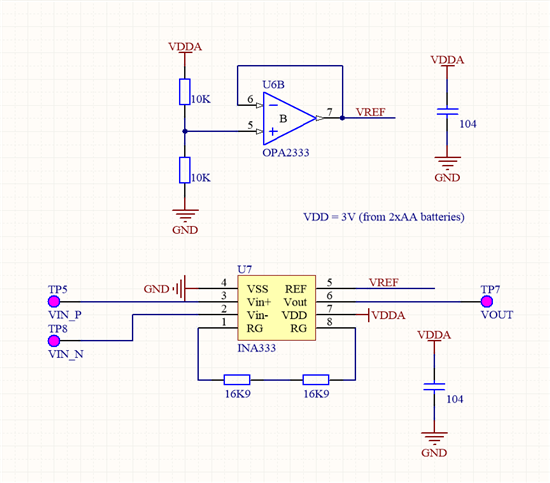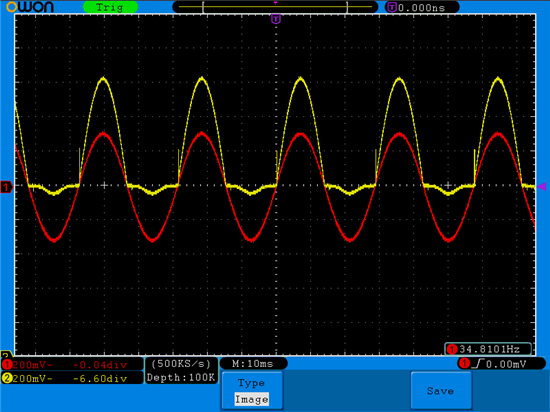Hello TI,
I've just got some INA333 samples from TI.
I made a circuit to test this, but I have 2 problem.
- Gain always = 2
- Positive signal is cut off.
Please take a look at the image below about the circuit and the signal from ossillo.
Channel 1 is signal from function generator( Amp = 500mV, f ~ 35Hz)
Channel 2 is out voltage from INA333. Vref ~ 1.5V







